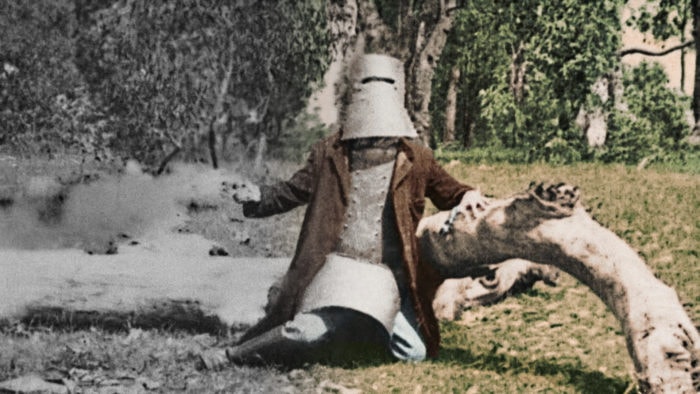How colourisation of historical images are changing our national identity

IF YOU’VE EVER watched old footage of World War I or World War II, the events may seem distant and the individuals pictured harder to empathise with as a result. But with a touch of colour, these images can be brought to life.
Inspired by the success of America in Colour, Australian filmmakers in association with Screen Australia and SBS, are in the final stages of creating Australian in Colour, a four-part documentary series that will colourise archival footage of major historical events in Australian history.
Fascination with the colourisation of historical images has surged in the past year. “The images make you time travel. You suddenly see these events that often feel quite remote and it’s as if they’re happening much more immediately,” producer Jo-anne McGowan told Australian Geographic.
Best known for her documentary David Stratton: A Cinematic Life, Jo-anne has worked with archival material throughout her career and had been waiting for an opportunity like this. “The directors and writers on the project have worked with a lot of archives. In the past 20 years of our careers we’d seen bits of archive that we’ve wanted to colourise. We always thought that we’d include those in a bigger project.”
Jo-anne is working with a small team of French colourists, including Samuel Francois Steininger, who helped produce the colourised images in America in Colour. Samuel first started producing historical documentaries in France 15 years ago, when several channels became interested in adding colour.
“Their audiences were getting much older and they wanted a way to make their programs more accessible and enjoyable for a wider, potentially younger audience,” he said. With an artistic background, Samuel honed his skill set and is now one of the most in-demand colourists.

The Story of the Kelly Gang, made in 1906, is considered to be not only the first Australian film, but the first full-length feature film. Here, it’s been colourised.
The tedious task of colourisation
Samuel equates the process of colourisation to a police investigation. He believes in painstaking accuracy and so he has an entire team of historians and researchers analysing black and white footage to recreate every single object in a single frame. “Every dress, every car, every building and every landscape: we must find an accurate colour reference,” he said.
After the investigation into colour is complete, the colour must be applied to each and every frame of that moving image, which, Samuel explained, is a long and delicate process. In just one 50 minute episode, there are around 600 frames.
During the making of the series, Google independently announced it had begun using artificial intelligence to colourise black and white images. However, Samuel said he is skeptical that AI could simplify this process in the future.
“What starts to work on one image, for example, is just impossible to apply to a moving image. The algorithm takes information from a colour database. There’s no historical process, and therefore, no historical accuracy. AI can’t replace the intelligence of a team of researchers and historians.”
The future of Australia’s digital archives
One of the biggest challenges in the process of creating Australia in Colour was digitising film material that exists in different formats.
“Finding the material is harder, but what’s even harder is standardising that material,” Jo-anne said. “If I wanted something that I’ve found on VHS, I’ll have to hunt down the masterfile, but sometimes the master file isn’t the best quality. It’s big jigsaw puzzle.”
According to the National Film and Sound Archive of Australia, “there is now consensus among audiovisual archives internationally that we will not be able to support large-scale digitisation of magnetic media in the very near future. Tape that is not digitised by 2025 will in most cases be lost forever,” so the issue of digitisation is one that goes beyond just this project.
In the process of colouring the different frames, Samuel also takes the time to improve the final product by removing any scratches, dirt or grime. “It’s an exciting by-product of this series that we are scanning so much film material that will then be made easily accessible to the general public,” Jo-anne said.
The team is hoping the series will give Australians the opportunity to connect with the past in a way they haven’t been able to before. “Young audiences respond differently to coloured images than they do to black and white images. I’ve seen people actually moved to tears by colourised pictures, because they become so much more real,” Jo-anne said.
Back in France, Samuel said that colourised images have become a conversation starter. “I’ve noticed that there is sometimes a lack of understanding between younger and older generations. Younger generations may think ‘oh, that happened a long time ago’ but when it’s colour they engage more, it helps them start conversations with their grandparents about their lives back then.”
Australia in Colour premieres 8:30 PM, Wednesday on SBS Television.




